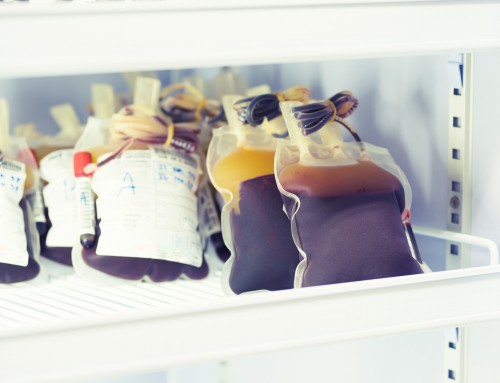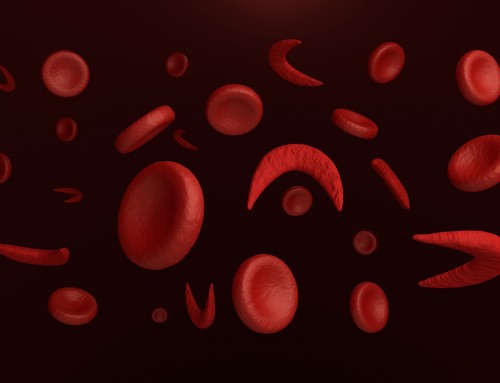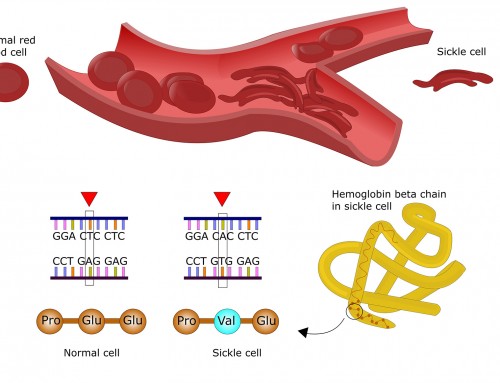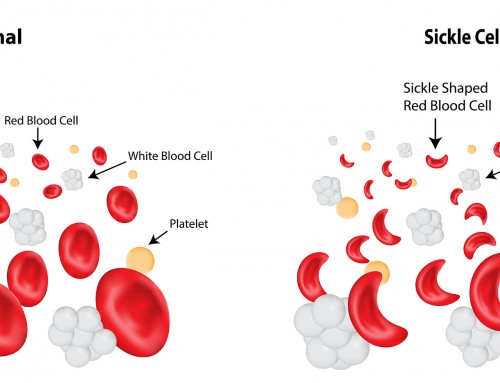- Gallstones (bilirubin released from hemolysis of red blood cells can form stones in the gallbladder)
- Stroke (caused by blocked blood flow to the brain)
- Acute Chest Syndrome (caused by lung infection or blocked blood vessels in lungs)
- Pulmonary hypertension (increased pressure in blood vessels in lungs caused by harder pumping of the heart to supply adequate oxygen)
- Organ damage (caused by chronic deficiency of oxygen-rich blood, leading to damage to the nerves and organs such as kidney, liver and spleen)
- Vision problems (caused by blocked blood flow to the retina)
What are the signs and symptoms of Sickle Cell Disease?
The signs and symptoms of sickle cell disease typically first appear in early childhood. The severity of the symptoms depends on the type of sickle cell disease and varies between affected individuals. If left untreated, it could lead to organ damage and other serious complications.
In sickle cell disease, red blood cells become sickle shaped which affects oxygen and blood supply to the body, resulting in the signs and symptoms that characterize the disease. Common signs and symptoms include anemia, jaundice, pain episodes, frequent infections, hand-foot syndrome, and delayed growth.
Anemia
Anemia is a condition where there is a deficiency of red blood cells in the blood. It is caused by the premature breakdown of sickled red blood cells, resulting in below normal levels of red blood cells in blood. Sickled red blood cells are fragile and only have a lifetime of 10-20 days compared to 120 days for a normal red blood cell. As sickled red blood cells are less flexible, they have a tendency to undergo hemolysis more frequently. Anemia is associated with fatigue, and delayed growth and development.
Jaundice
Jaundice is the yellowing of skin and the white area of the eye. The yellow discoloration is caused by accumulation of excess bilirubin in the bloodstream. Too much bilirubin results when the body is overproducing bilirubin, or when the liver cannot get rid of it fast enough. In the case of sickle cell disease, it is caused by rapid destruction of red blood cells, which releases bilirubin during the hemolytic process.
Pain episodes
Pain episodes or crises are caused by sickled blood cells blocking the small vessels in the body. These sickled red blood cells slow down or block blood and oxygen supply to limbs and organs, resulting in organ damage. Pain crises often occur in the abdomen, chest, lower back and joints. A crisis can be triggered by illness, temperature change, stress, dehydration and high altitude.
Frequent infections
The spleen is an organ that helps to fight infections. It is responsible for filtering germs in blood and making a type of white blood cell. Sickled blood cells can damage the spleen, making the body more vulnerable to serious bacterial infections.
Hand-foot syndrome
Swollen hands and feet are the first signs of hand-foot syndrome in babies, and it is caused by sickled red blood cells blocking circulation to hands and feet. Babies normally have no symptoms at birth, as fetal hemoglobin is still present. However, by 4 months of age, additional signs of sickle cell anemia will appear, as the body switches to make adult hemoglobin. Children with sickle cell anemia often develop jaundice and have slow growth and development.
Delayed growth
As red blood cells supply oxygen and nutrients important for growth and development, a shortage of red blood cells will result in slow growth in children, and delayed puberty in teens.
Complications
Sickle cell disease can lead to serious complications including:
DNA In the News2017-04-06T20:55:08+00:00





